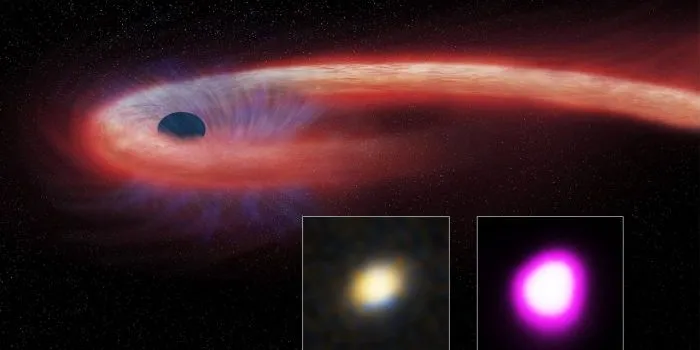
Using data from Chandra’s X-Ray Observatory and the Swift Satellite, NASA picked up a Black Hole in a galaxy 1.8 billion light years away from Earth that’s chomping down on a star twice the size of our sun. This feast of a star is known as a Tidal Disruption Event (TDE) and happens when a star ventures beyond the event horizon of a black hole and its matter is sucked in beyond the point of no return.
Professor Dacheng Lin from the University of New Hampshire said that feeding frenzies of this long a time period had never been seen before. No TDE had remained as bright as this had before. Since the 1990s, NASA has been observing TDEs but most have lasted about a year; this one has been going on for over 10 years! That makes it the longest one on record.
The X-Rays being emitted from the black hole have also told the researchers something, that it is growing as it is ingesting the star. James Guillochon, a co-author from the Harvard-Smithsonian Center for Astrophysics said the object had been growing for as long as they had been observing it.
Professor Geraint Lewis from the University of Sydney said that this had given researchers an insight into the evolution of a galaxy, which, by conventional wisdom, always has a supermassive black hole at its center. Hence as the galaxy grows in size, so does its black hole, as the stars nearest to it are slowly fed into it.